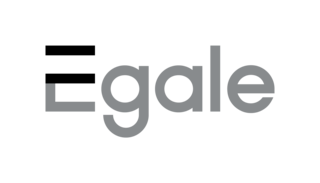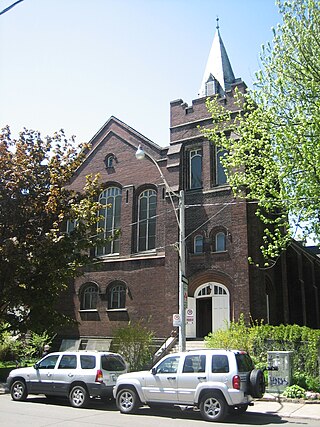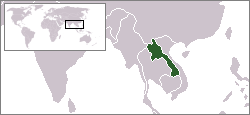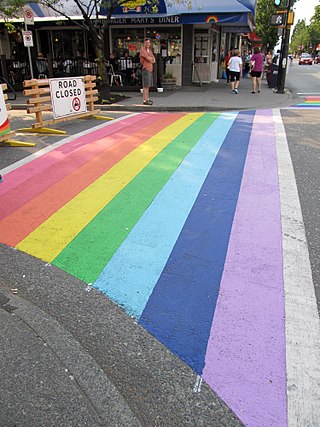Related Research Articles

The LGBT community is a loosely defined grouping of lesbian, gay, bisexual, and transgender individuals united by a common culture and social movements. These communities generally celebrate pride, diversity, individuality, and sexuality. LGBT activists and sociologists see LGBT community-building as a counterweight to heterosexism, homophobia, biphobia, transphobia, sexualism, and conformist pressures that exist in the larger society. The term pride or sometimes gay pride expresses the LGBT community's identity and collective strength; pride parades provide both a prime example of the use and a demonstration of the general meaning of the term. The LGBT community is diverse in political affiliation. Not all people who are lesbian, gay, bisexual, or transgender consider themselves part of the LGBT community.
Pink Triangle Press is an independent, Canadian media organization specializing in LGBTQ2S+ journalism, television and online interactive media. Founded in 1971, Pink Triangle Press is one of the longest-publishing LGBTQ2S+ media groups in the world. Today, Pink Triangle Press publishes Xtra, an online magazine and community platform covering LGBTQ2S+ culture, politics and health. As a mission-guided organization with no shareholders, profits earned by the business are reinvested to support its mission: daring together to set love free.
Xtra Magazine is an LGBTQ-focused digital publication and former print newspaper published by Pink Triangle Press in Toronto, Ontario, Canada. The publication is a continuation of the company's former print titles Xtra!, Xtra Ottawa, and Xtra Vancouver, which were all discontinued in 2015.
Xtra Ottawa was a lesbian, gay, bisexual and transgender community newspaper published in Ottawa, Ontario, Canada. It was launched in 1993. Xtra Ottawa, started as a monthly, and was later published 17 times a year, with a publication schedule of every three weeks. The Ottawa edition had a circulation of 20,000 copies which reached 36,000 readers.

Egale Canada is an advocacy organization founded in 1986 by Les McAfee to advance equality for Canadian lesbian, gay, bisexual and transgender (LGBT) people and their families, across Canada.

The Body Politic was a Canadian monthly magazine, which was published from 1971 to 1987. It was one of Canada's first significant gay publications, and played a prominent role in the development of the LGBT community in Canada.

The Metropolitan Community Church of Toronto is a congregation of the worldwide Metropolitan Community Church movement located in Toronto, Ontario, Canada and is a welcoming congregation openly affirming lesbian, gay, bisexual, heterosexual and transgender people. MCC Toronto was instrumental in changing the law on same sex marriage in Ontario, when two same-sex marriage ceremonies performed at the church on January 14, 2001 initiated the process leading to the Halpern v Canada (AG) decision of 2003.

Canadian lesbian, gay, bisexual, and transgender (LGBT) rights are some of the most extensive in the world. Same-sex sexual activity was made lawful in Canada on June 27, 1969, when the Criminal Law Amendment Act, 1968–69 was brought into force upon royal assent. In a landmark decision in 1995, Egan v Canada, the Supreme Court of Canada held that sexual orientation is constitutionally protected under the equality clause of the Canadian Charter of Rights and Freedoms. In 2005, Canada was the fourth country in the world, and the first in the Americas, to legalize same-sex marriage nationwide. In 2022, Canada was the third country in the world, and the first in North America, to fully ban conversion therapy nationwide for both minors and adults.

El-Farouk Khaki is a Tanzanian-born Muslim Canadian of Indian origin who is a refugee and immigration lawyer, and human rights activist on issues including gender equality, sexual orientation, and progressive Islam. He was the New Democratic Party's candidate for the House of Commons in the riding of Toronto Centre in a March 17, 2008 by-election. Khaki came in second with 13.8% of the vote.
This is a timeline of notable events in the history of the lesbian, gay, bisexual and transgender (LGBT) community in Canada. For a broad overview of LGBT history in Canada see LGBT history in Canada.
Pride Week 1973 was a national LGBT rights event in Canada, which was held in August 1973. The event, which took place from August 19 to 26, was marked by LGBT-themed programming in several Canadian cities, including Vancouver, Toronto, Ottawa, Montreal, Saskatoon and Winnipeg. Programming included an art festival, a dance, picnic, a screening of a documentary and a rally for gay rights that occurred in all the participating cities.

Lesbian, gay, bisexual and transgender (LGBT) rights in Laos go unreported and unnoticed. While homosexuality is legal in Laos, it is very difficult to assess the current state of acceptance and violence that LGBT people face because of government interference. Numerous claims have suggested that Laos is one of the most tolerant communist states. Despite such claims, discrimination still exists. Laos provides no anti-discrimination protections for LGBT people, nor does it prohibit hate crimes based on sexual orientation and gender identity. Households headed by same-sex couples are not eligible for any of the rights that opposite-sex married couples enjoy, as neither same-sex marriage nor civil unions are legal.

Fierté Montréal, also called Montreal Pride, is an annual LGBT pride festival in Montreal, Quebec. The event was founded in 2007 at the initiative of Montreal’s LGBTQ+ communities after the city's prior Pride festival, Divers/Cité, repositioned itself as a general arts and music festival.
This article gives a broad overview of lesbian, gay, bisexual and transgender (LGBT) history in Canada. LGBT activity was considered a crime from the colonial period in Canada until 1969, when Bill C-150 was passed into law. However, there is still discrimination despite anti-discrimination law. For a more detailed listing of individual incidents in Canadian LGBT history, see also Timeline of LGBT history in Canada.

The following outline offers an overview and guide to LGBT topics.

Vancouver's LGBT community is centered on Davie Village. Historically, LGBT people have also gathered in the Chinatown and Gastown neighborhoods. Former establishments include Dino's Turkish Baths, a gay bathhouse on Hastings, and the city's first drag bar, BJ's, on Pender Street.

Miami has one of the largest and most prominent LGBTQ communities in the United States. Miami has had a gay nightlife scene as early as the 1930s. Miami has a current status as a gay mecca that attracts more than 1 million LGBT visitors a year. The Miami area as a whole has been gay-friendly for decades and is one of the few places where the LGBTQ community has its own chamber of commerce, the Miami-Dade Gay and Lesbian Chamber of Commerce (MDGLCC). As of 2005, Miami was home to an estimated 15,277 self-identifying gay and bisexual individuals. The Miami metropolitan area had an estimated 183,346 self-identifying LGBT residents.

The ongoing COVID-19 pandemic has highlighted inequities experienced by marginalized populations, and has had a significant impact on the LGBT community. Gay pride events were cancelled or postponed worldwide. More than 220 gay pride celebrations around the world were canceled or postponed in 2020, and in response a Global Pride event was hosted online. LGBTQ+ people also tend to be more likely to have pre-existing health conditions, such as asthma, HIV/AIDS, cancer, or obesity, that would worsen their chances of survival if they became infected with COVID-19. They are also more likely to smoke.
References
- ↑ "Ottawa introduces first 'Gay Village'". CBC News.
- ↑ Egan v. Canada, [1995] 2 S.C.R. 513 at 528.
- ↑ "Part I – The context: sexual orientation, human rights protections, case law and legislation | Ontario Human Rights Commission".
- ↑ "Canadian Community Health Survey - Annual Component (CCHS)". Statistics Canada.
- 1 2 "Same-sex couples are flocking to the altar, new census data reveals". National Post , September 19, 2012.
- 1 2 "Census may have counted roommates as married gay couples". CBC News, September 19, 2012.
- ↑ "Looking back, moving forward" Archived 2013-06-20 at archive.today . Vue Weekly , June 10, 2009.
- ↑ "World Pride in Toronto: One-year countdown begins". Toronto Star , July 3, 2013.
- 1 2 "Evolution of Pride celebrations in Canada". Xtra! , June 11, 2013.
- ↑ "Thompson will become third Manitoba community to celebrate sexual diversity". Thompson Citizen , June 4, 2014.
- ↑ "Sault Pridefest gets local support". Sault Star , August 19, 2014.
- ↑ "Pride festivals catching on in northern Ontario". CBC Sudbury, August 20, 2014.
- 1 2 "La Fierté s’enracine dans les régions de Sherbrooke et Rimouski". Fugues , September 26, 2013.
- 1 2 3 4 5 John Barton and Billeh Nickerson, eds. Seminal: The Anthology of Canada's Gay Male Poets. Arsenal Pulp Press, 2007. ISBN 1551522179.
- ↑ Rexroth, Kenneth (1978). "Elsa Gidlow's Sapphic Songs". American Poetry Review. 7 (1), 20. (subscription required)
- ↑ "Émile Nelligan, interné parce que gai?" Désautels , January 14, 2011.
- 1 2 3 4 5 6 "The First Poets, Part 1: “Gaydar Moments”. The Drummer's Revenge, October 13, 2009.
- ↑ Émile J. Talbot, Reading Nelligan. McGill-Queen's University Press, 2002. ISBN 0773523189.
- ↑ Gaëtan Dostie, "Nelligan et de Bussières créés par Dantin ?". Le Patriote. Republished by the Saint-Jean-Baptiste Society of Montreal, July 22, 2015.
- ↑ "Canada's first gay rag". Xtra! . Toronto: Pink Triangle Press. February 19, 2015.
- ↑ John Sutherland, "The Writing of Patrick Anderson". First Statement, 1.19 (1943): 3– 6
- ↑ John Sutherland, "Retraction". First Statement, 1.20 (1943): cover.
- ↑ Brian Trehearne, The Montreal Forties: Modernist Poetry in Transition. University of Toronto Press, 1999. ISBN 9780802044525.
- ↑ Peter Knegt, "Canadian LGBTQ literature is having a moment, and this Montreal festival is showcasing that". CBC Arts, April 18, 2018.
